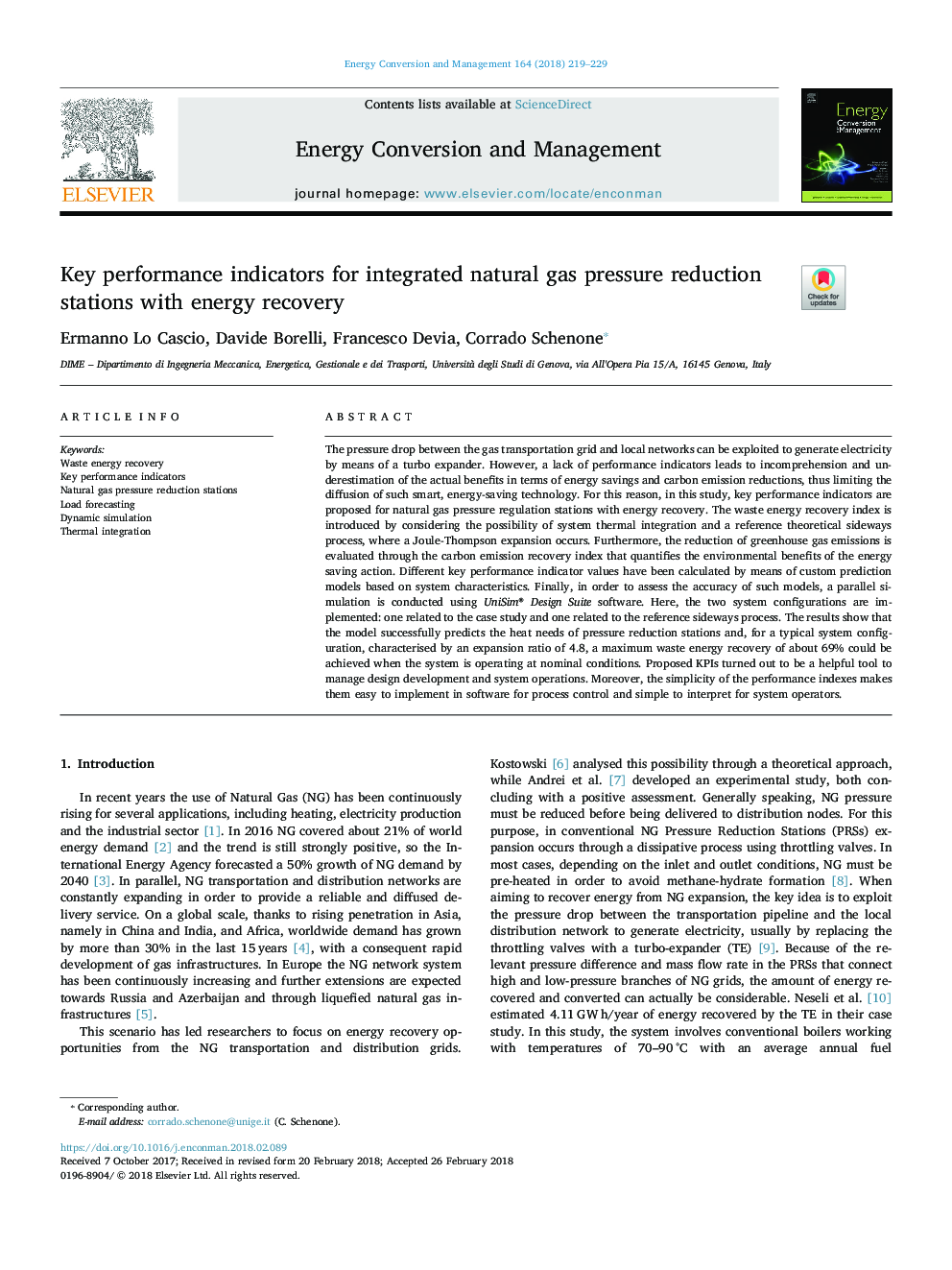| Article ID | Journal | Published Year | Pages | File Type |
|---|---|---|---|---|
| 7158658 | Energy Conversion and Management | 2018 | 11 Pages |
Abstract
The pressure drop between the gas transportation grid and local networks can be exploited to generate electricity by means of a turbo expander. However, a lack of performance indicators leads to incomprehension and underestimation of the actual benefits in terms of energy savings and carbon emission reductions, thus limiting the diffusion of such smart, energy-saving technology. For this reason, in this study, key performance indicators are proposed for natural gas pressure regulation stations with energy recovery. The waste energy recovery index is introduced by considering the possibility of system thermal integration and a reference theoretical sideways process, where a Joule-Thompson expansion occurs. Furthermore, the reduction of greenhouse gas emissions is evaluated through the carbon emission recovery index that quantifies the environmental benefits of the energy saving action. Different key performance indicator values have been calculated by means of custom prediction models based on system characteristics. Finally, in order to assess the accuracy of such models, a parallel simulation is conducted using UniSim® Design Suite software. Here, the two system configurations are implemented: one related to the case study and one related to the reference sideways process. The results show that the model successfully predicts the heat needs of pressure reduction stations and, for a typical system configuration, characterised by an expansion ratio of 4.8, a maximum waste energy recovery of about 69% could be achieved when the system is operating at nominal conditions. Proposed KPIs turned out to be a helpful tool to manage design development and system operations. Moreover, the simplicity of the performance indexes makes them easy to implement in software for process control and simple to interpret for system operators.
Keywords
Related Topics
Physical Sciences and Engineering
Energy
Energy (General)
Authors
Ermanno Lo Cascio, Davide Borelli, Francesco Devia, Corrado Schenone,
